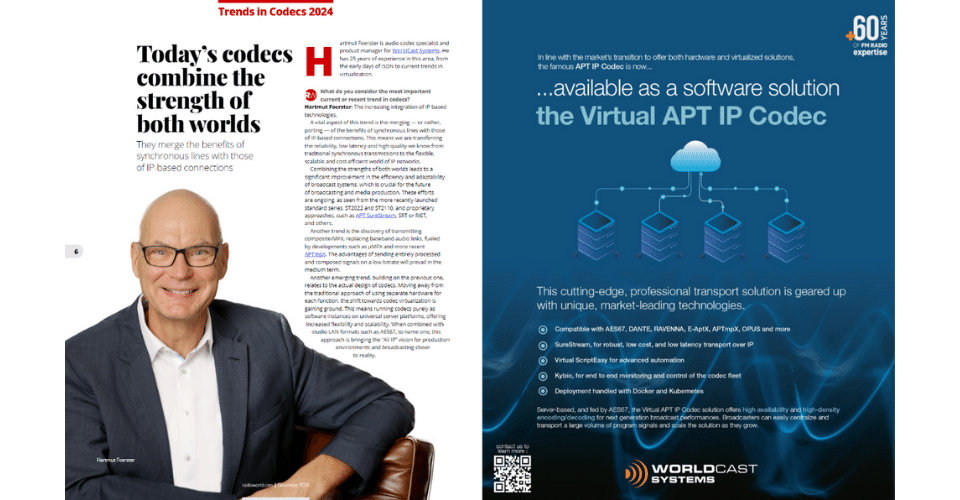Source: Radio World - Trends in Codecs 2024
Hartmut Foerster is an audio codec specialist and product manager for WorldCast Systems. He answers questions from Radio World, sharing his insights.
What do you consider the most important current or recent trend in codecs?
Hartmut: The increasing integration of IP-based technologies. A vital aspect of this trend is the merging - or rather, porting - of the benefits of synchronous lines with those of IP-based connects. This means we are transferring the reliability, low latency, and high quality we know from traditional synchronous transmissions to the flexible, scalable and cost-efficient world of IP networks.
Combining the strengths of both worlds leads to a significant improvement in the efficiency and adaptability of broadcast systems, which is crucial for the future of broadcasting and media production. These efforts are ongoing, as seen from the more recently launched standard serie, ST2022 and ST2110, and proprietary approaches, such as APT SureStream, SRT or RIST, and others.
Another trend is the discovery of transmitting composite/MPX, replacing baseband audio links, fueled by developments such as APTmpX. The advantages of sending entirely processed and compsed signals on a low bitrate will prevail in the medium term.



